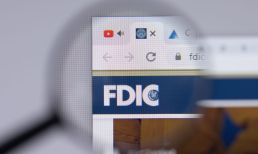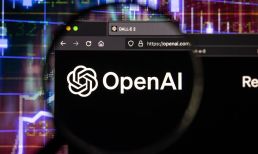Most of the entrepreneurs we talk to start out trying to solve their own problem only to end up discovering that there is no solution and that they need to build one (and bring it to market). But Amanda Patterson, founder and CEO of The Call List, had a slightly different twist on that story when she talked to Karen Webster for this week’s edition of Matchmakers. She wasn’t solving her own problem, but the problem of a friend of hers.
That friend happened to be an anthropologist and a street performer who, by using a Facetime call list, was broadcasting his various performances to friends and family around the nation. The calls were popular — incredibly popular — which actually created a challenge for her friend, who was hosting calls with as many as 30 to 50 people at once, which became somewhat overwhelming and difficult to organize.
Patterson told Webster that “more people were constantly trying to get on the list. With my background in technology and consulting, I thought I knew a solution must exist somewhere.”
But after some searching around and attempts to “leverage [a] live social chilling platform,” she realized that they weren’t quite the right fit.
“It turned out that what really worked, what really drove interaction, was the power of the call and the privacy [a] one-to-one video interaction offers the participant.”
A platform offering that — outside a very inefficient and cumbersome process using FaceTime — didn’t exist in quite the format for which Patterson was looking.
Advertisement: Scroll to Continue
But with some work with developers and a willingness to build out the platform, all while keeping her day job as a consultant, that development was underway.
“Momentum took us to where we are now and the exploration [of] use cases quickly guided us to something that would be appealing to brands of all kinds looking to have more meaningful engagement with their consumer base.”
How Does It Work?
Though the virtual community platform was originally inspired by an artist and has been designed so that entertainers and groups can set up an account and begin interacting with an audience, when The Call List first thought about going to market, they really thought about brand partners who would want to come aboard and create new inroads to their consumers or user groups.
“Some of the feedback we got early on from those brands was, ‘oh gosh, another app and platform to drive our audience to.’” But our team didn’t have a lot of ego around creating the next YouTube. We would love to be the Squarespace for these experiences, which means often we can power a page within their app or on their existing platform to encourage the type of dynamic experience these brands want to build.”
To use the service, the individual host or brand can create an event, which they have broad control over: Size, invitation list, whether it will be something that involves paying admission, whether it is for certain VIP code-bearing participants are all features that are customizable.
The invitations to the event go out, potential participants opt in, and then when the time comes, they get the call that brings them into the meeting. From there, Patterson told Webster, the participants are looking at their host on the screen in much the same way they would be in a Facetime chat, and the host can see all participants in front of them. The only major difference from being in a chat is a “hand raise button” that allows individual callers to take themselves off mute and address the entire meeting.
That button is also the only way users make themselves known to the entire call; other than that, users cannot see each other. And though hosts do get data about the call, they get that data in an aggregated form with all individualizing information redacted.
How To Ignite?
The first vertical The Call List pursued when it was entering the marketplace was health and beauty brands, as it is the kind of very visual field where users are explicitly looking for additional content and more personalized engagement.
“This offered them the chance to host events with celebrity makeup artists and show behind-the-scenes material from the big fashion shows. This also allowed a really unique way for direct brand interaction.”
As they were gaining steam in the beauty space, The Call List found interest from a somewhat less-expected source: the healthcare industry.
“And we were turned on to [an] opportunity to create [a] really powerful experience for patients or caregivers,” Patterson noted.
That experience, she said, might be the ability to talk to an expert that might otherwise be out of geographical range, or to be part of a treatment community with patients with similar needs and interests.
“If you think about the time individual doctors spend sharing information about a certain disease … or modality of care with the patients themselves, that is time lost with other patients. And in talking to a lot of these folks in healthcare, by the year 2020 there is an expected shortage of specialty care doctors coming that is expected to be in the range of 70,000. If there is this huge cap in the ability of specialists to spend time with individual patients … this is a way to scale those resources and offer access and care to patients that otherwise might [not] have had it.”
As for providing for their own maintenance and care, The Call List charges individuals and brands who use the platform (after a free trial period) a set amount to integrate their SDK and access the code and their library of features. Hosts also pre-pay for set amounts of time to use the platform and the list sizes they want to support in the events.
“They [the hosts] can then monetize by selling tickets to the events,” Patterson said, before also noting that the platform also provides deep linking capability, so that consumers can also be guided contextually to the relevant eCommerce opportunities that go along with their call.
There is nothing that can replace being there in person, of course, but consumers sometimes are willing and even hungry for content and contact that feels more direct, even if it is carried out at a digital distance.
The Call List is trying to bridge those physical distances and is building the virtual community platform that makes all kinds of connections just a ringing phone away.




